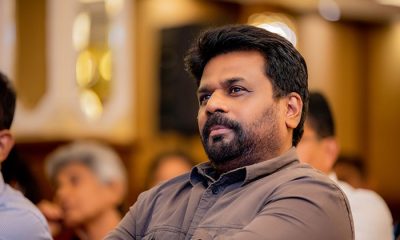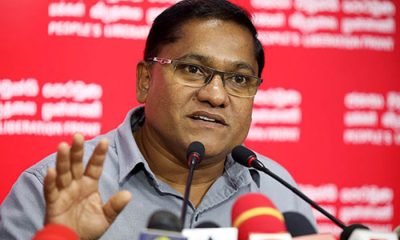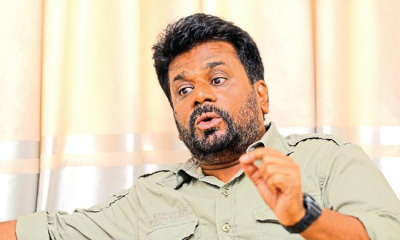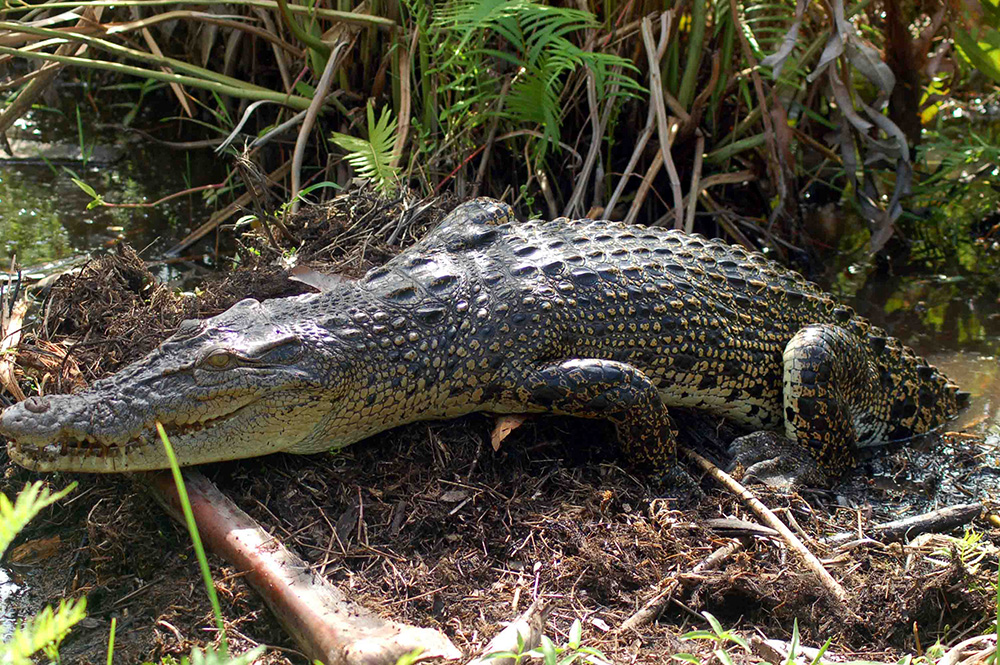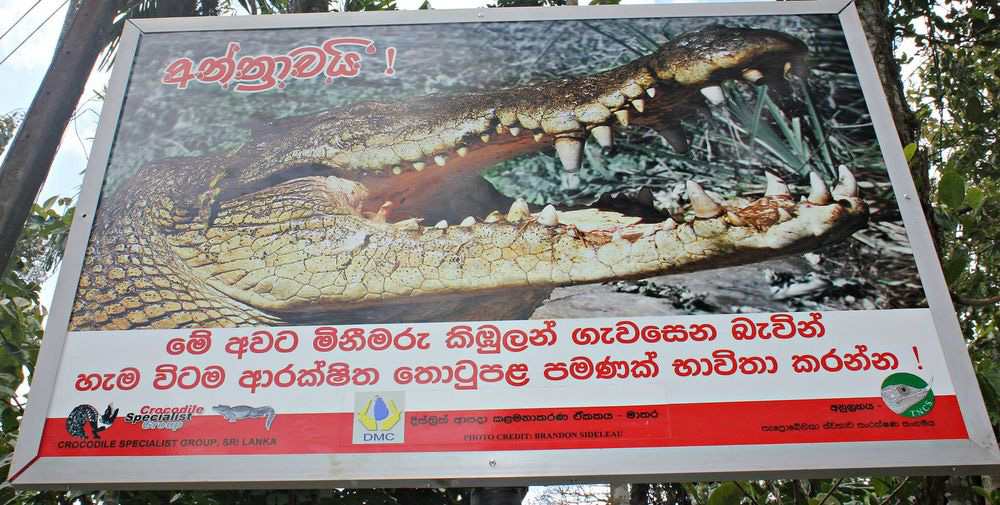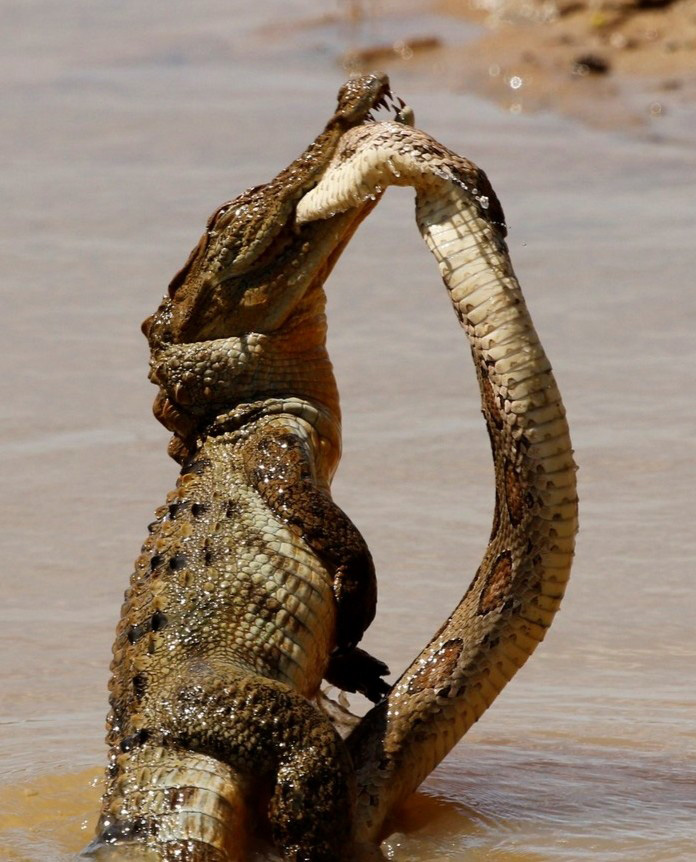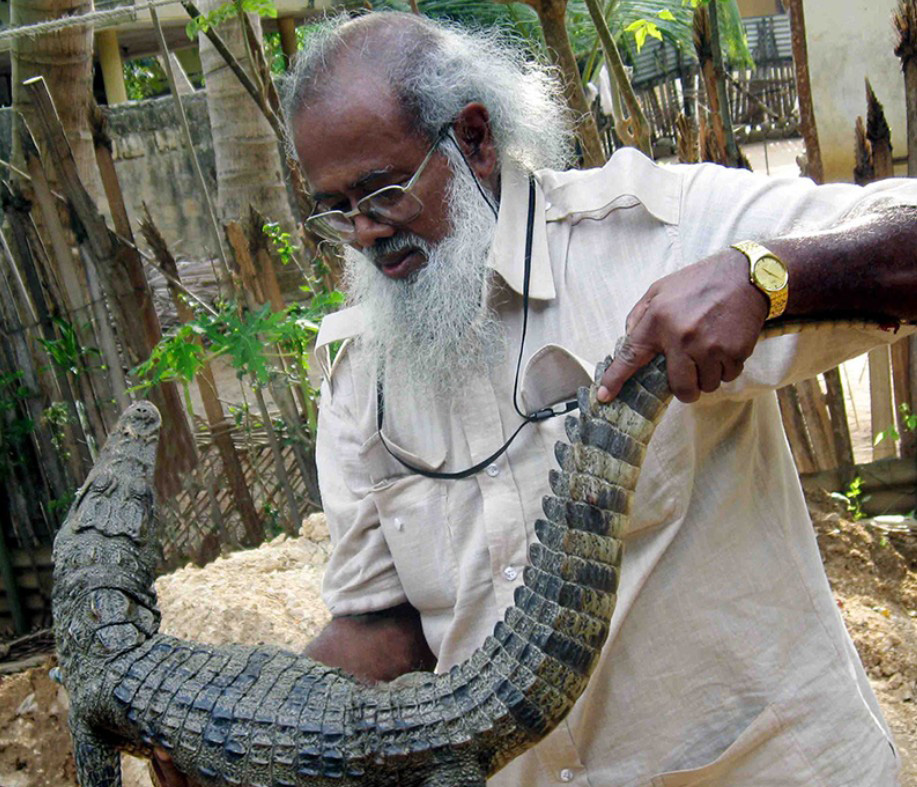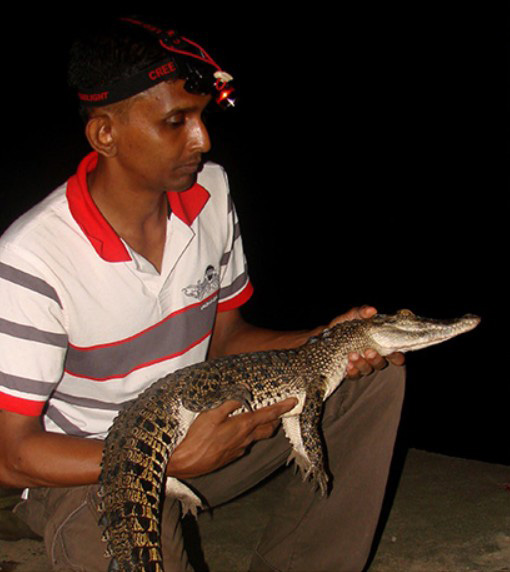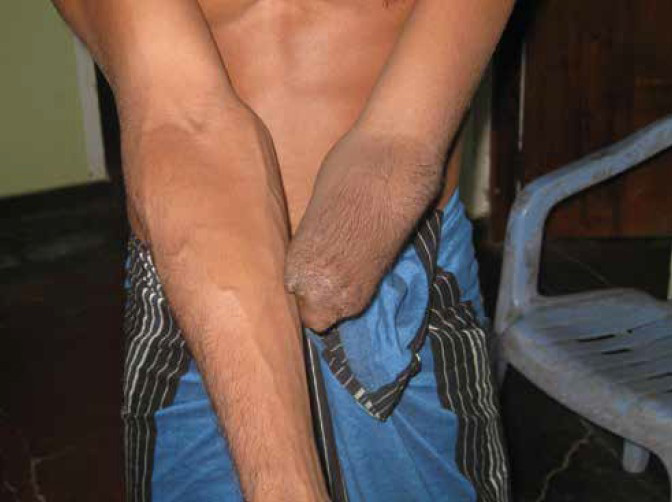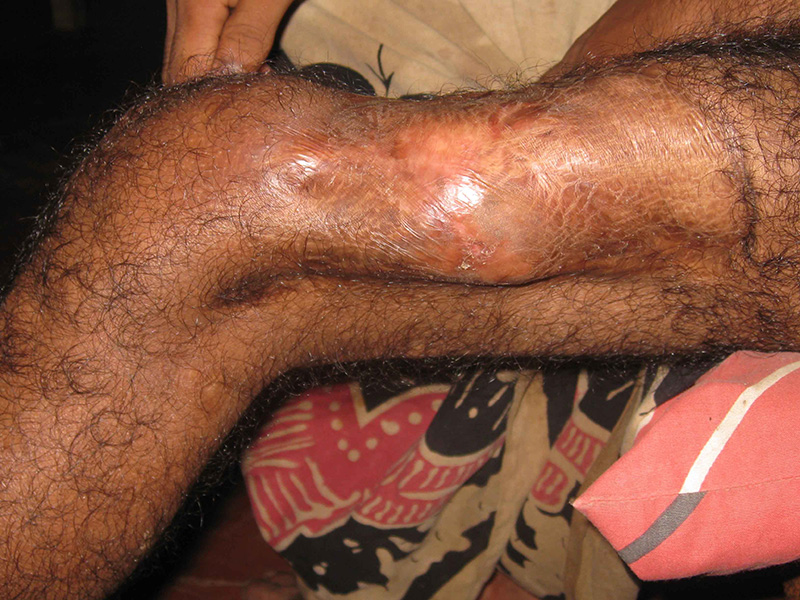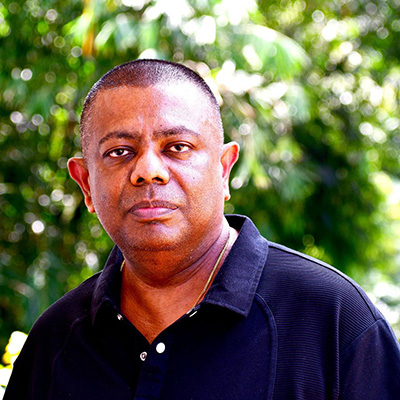Features
Need for AKD and JVP/NPP to be educated on complex geopolitics

India’s security needs consolidate US manoeuvring strategy in Indo-Pacific:
by Daya Gamage
Foreign Service National Political Specialist (rtd.)
US Department of State
Aware or unaware of the intricacies of big power play in the Indo-Pacific region to the emerging political entity in Sri Lanka, JVP-led National People’s Power (NPP) leader Anura Kumara Dissanayake has declared that he and his political party are (now) alive to India’s security concerns after his return from India having had discourses with External Affairs Minister and other leading Modi administration officials needs serious scrutiny.
In an interview with Sri Lanka’s Sirasa TV on February 15, Dissanayake reiterated that the ‘incoming’ National People’s Power administration “will not do anything that undermines Indian security”.
If Dissanayake had been aware that ‘India’s national security’ was somewhat beyond her ‘control’ and connected to the larger Indo-Pacific or Asia-Pacific region with ‘outside forces’ deeply embedded in, he would have made a ‘measured statement’ about India’s national security.
Before examining how India is tied to ‘a foreign military and technological force’ connected to the Asia-Pacific Region and that India’s national security cannot be isolated from ‘outside forces’ engaged in the region, it should be found out how Sri Lanka is connected to the overall regional security, an issue that Dissanayake doesn’t seem to have paid much attention to. The eight-page, 2007 (disclosed) US-Sri Lanka signed Acquisition and Cross-Services Agreement (ACSA) and the 83-page, 2017 ACSA (still kept classified by both Washington and Colombo) have much relevance to the overall Indo-Pacific region.
US Code Title 10 Section 2342: Cross-Servicing Agreement, under which a long process of US government assessment takes effect, how useful a non-NATO country, such as Sri Lanka could be to the national interest of the United States is vital to the understanding of Sri Lankan policy.
The US Code declares (Quote) (a)(1) Subject to section 2343 of this title and to the availability of appropriations, and after consultation with the Secretary of State, the Secretary of Defense may enter into an agreement described in paragraph (2) with any of the following: (Among others)
(D) The government of a country not a member of the North Atlantic Treaty Organization but which is designated by the Secretary of Defense, subject to the limitations prescribed in subsection (b), as a government with which the Secretary may enter into agreements under this section. (End Quote)
Before scrutinising other Sub-Sections, Sub-Section (D) is well connected to a ‘declaration’ of a diplomatic cable that reached Washington from the American Embassy in Colombo: 20 February 2007 diplomatic cable sent under the signature of Ambassador Robert Blake made it very clear (Quote) Since this agreement primarily benefits US forces, we think there are strong arguments to proceed with the signing the agreement (End Quote) referring to the 2007 ACSA. It is not difficult to understand why the 2007 agreement was expanded to 83 pages in 2017 and why it is still kept a secret.
Now to Sub-Section (b) of the U.S. Code Title 10 Section 2342: Cross-Servicing Agreement:
(Quote) (b) (which is well connected to the signing of both the 2007 and 2017 ACSA) The Secretary of Defense may not designate a country for an agreement under this section unless –
(1) the Secretary, after consultation with the Secretary of State, determines that the designation of such country for such purpose is in the interest of the national security of the United States; and
(2) in the case of a country which is not a member of the North Atlantic Treaty Organization, the Secretary submits to the Committee on Armed Services and the Committee on Foreign Relations of the Senate and the Committee on Armed Services and the Committee on International Relations of the House of Representatives notice of the intended designation at least 30 days before the date on which such country is designated by the Secretary under subsection (a). (End Quote)
The Pentagon, the State Department and Armed Services and International Committees of the US Senate and House of Representatives are very much involved in the process of using feed backs and assessments from the US diplomatic post in the host nation.
This writer, who was knowledgeable about this process during his engagement with the State Department for more than two decades, was aware of the manner in which the US diplomatic mission in Sri Lanka played that role.
To enter into an ACSA treaty, the designated country – in this case, Sri Lanka, which entered into the agreement in March 2007 and 2017– Washington has to determine (Quote) the designation of such country for such purpose is in the interest of the national security of the United States . (End Quote)
“Sri Lanka occupies some very important real estate in the Indo-Pacific region, and it’s a country of increasing strategic importance in the Indian Ocean region”, declared Alice Wells, US State Department’s Deputy Assistant Secretary addressing the foreign media at the department’s Washington Media Center on 24 January 2020—three weeks before she was in Colombo meeting newly-elected President Gotabhaya Rajapaksa.
The 2018 National Defense Strategy guides the Department of Defense to support the (US) National Security Strategy – the Asia Reassurance Initiative Act of 2018 – specifically calls for “expanding cooperation with democratic partners in South Asia, including Bangladesh, Nepal, and Sri Lanka.”
This 2018 document – declassified in January 2021 – evinces a special interest in Sri Lanka’s survival in the Indo-Pacific region, the formulation of its foreign policy, and its relations with India, the United States and China.
It should be mentioned here that the writer along with another (retired) Senior Foreign Service/Intelligence Officer (American) is currently developing a manuscript (for publication) exploring Washington’s foreign policy manipulations and discharges toward Sri Lanka and India, and the manner in which Sri Lanka and India were (and are) playing their roles in response to Washington’s excessive and (almost) hegemonic role in the Indo-Pacific region.
It is in this context that India’s national security can in no way be isolated from Washington’s military/defense and intelligence approaches and activities in the Asia-Pacific region and its foreign policy discharges that this writer and his co-author discovered through their extensive research and investigations.
Some of the salient policy determinations and projections in the now-declassified 2018 National Security Strategy – the Asia Reassurance Initiative Act document of the US government are as follows:
· A strong India, in cooperation with like-minded countries, would act as a counterbalance to China.
· India remains preeminent in South Asia and takes the leading role in maintaining Indian Ocean security, increased engagement with Southeast Asia, and expands its economic, defense, and diplomatic cooperation with other US allies and partners in the region.
· US Objective: Accelerate India’s rise and capacity to serve as a net provider of security and Major Defense Partner; solidify an enduring strategic partnership with India underpinned by a strong Indian military able to effectively collaborate with the United States and her partners in the region to address shared interests.
· US Actions: Build a stronger foundation for defense cooperation and interoperability; expand US defense trade ability to transfer defense technology to enhance India’s status as a Major Defense Partner.
· US Objective: Strengthen the capacity of emerging partners in South Asia, including the Maldives, Bangladesh, and Sri Lanka, to contribute to a free and open order. US Action: Establish a new initiative with South Asian partners modeled on the Maritime Security Initiative.
· National Security Challenges: How to maintain US strategic primacy in the Indo-Pacific region while preventing China from establishing new illiberal spheres of influence.
· US Action: Enhance combat-credible US military presence and posture in the Indo-Pacific region to uphold US interests and security commitments.
Now, let’s see how ‘Indian National Security’ that Anura Kumara Dissanayake has referred to, and aspires to safeguard under a JVP-led NPP government he is hoping to form, is tied to the Indo-Pacific Region that Washington is playing a dominant role in.
US-India Relationship: Critical to Indo-Pacific
A shared vision for a free and open Indo-Pacific bolsters the US-India relationship as the two countries continue to strengthen defense ties, a senior Pentagon official said on Sept. 19, 2023.
Siddharth Iyer, the Director for South Asia policy in the Office of (US) Secretary of Defense, said the defense partnership had experienced an “incredible and unprecedented amount of momentum” as evidenced by Secretary of Defense Lloyd J. Austin twice traveling to India recently and the “warmth and familiarity” between the two countries.
“This relationship is one of the top priorities for the department,” Iyer said. “Our belief is that getting the US and India relationship right is not just necessary, it’s essential to achieving our strategy in the Indo-Pacific.”
What he meant by “our strategy” is the United States’ strategy.
“I think one of the ways in which we think about the roadmap is really a manifestation of Secretary Austin’s commitment to accelerating India’s military modernization, and for him, putting the department on the hook to find targeted opportunities to propose to advance India’s indigenous defense production capabilities,” Iyer said during a discussion on furthering US-India security cooperation hosted by the Hudson Institute in Washington.
“department on the hook”, meaning the United States on the hook.
India’s Minister of Defense Rajnath Singh and Minister of External Affairs Dr. S. Jaishankar engaged with (US) Secretary of State Antony J. Blinken and Secretary of Defense Lloyd J. Austin for the fifth US-India 2+2 Ministerial Dialogue in New Delhi on November 10, 2023.
They reaffirmed the importance of the US-India Comprehensive Global Strategic Partnership in ensuring international peace and security. The Ministers also underlined their strong commitment to safeguarding a free, open, and an inclusive Indo-Pacific.
The Joint Statement released November 10, 2023 on the Fifth Annual India-US 2+2 Ministerial Dialogue reaffirmed the US-India”commitment to further deepen the multifaceted defense partnership through wide-ranging dialogues and military exercises of increasing complexity and sophistication, accelerated joint projects initiated under the June 2023 Roadmap for US-India Defense Industrial Cooperation and expanded collaboration in emerging domains, such as space and artificial intelligence. They expressed satisfaction with the pace of cooperation in Maritime Domain Awareness and looked forward to identifying pathways to promote stronger service-to-service ties and share technologies to address an array of maritime challenges, including in the undersea domain.”
These discourses, dialogues and rapport have prompted steps to “deepen and diversify” the two countries’ so-called Major Defense Partnership.
The two (US and India) militaries signed their second Master Ship Repair Agreement, with the US Navy and Mazagon Dock Shipbuilders Ltd., in August 2023, recommitting themselves to advancing India’s emergence as a hub for the maintenance and repair of forward-deployed US Navy assets and other aircraft and vessels, according to the White House. The countries also made further commitments to the US companies investing more in India’s maintenance, repair and overhaul capabilities and facilities for aircraft.
In late September 2023, Ely Ratner, the US Department of Defense’s Assistant Secretary for Indo-Pacific Security Affairs, Donald Lu, State Department’s assistant secretary for South and Central Asian Affairs, Vani Rao, a secretary in the Indian Ministry of External Affairs and Vishwesh Negi, the Joint Secretary of Indian Ministry of Defense engaged in “a wide range of ambitious initiatives” dialogue between the two nations.
According to a US Defense Department statement “The officials also discussed regional security developments and strategic priorities across the Indo-Pacific region. A strong US-India partnership is essential to upholding security and prosperity in the Indo-Pacific region.”
India having entered into a military partnership with the United States, and Sri Lanka’s close proximity to India in political and economic spheres, Sri Lanka is at a crossroads surrounded by Washington, New Delhi and Beijing.
As an emerging leader, Anura Kumara Dissanayake could have made a ‘measured statement’ on the official policy of the government he is planning to form towards ‘India’s security’ as data given above show the manner in which Washington has tied up with New Delhi, and the strategy the United States has adopted to forge a strong defense ties with India; contrary to what Dissanayake believes, India is not developing an ‘isolated national security policy’. New Delhi has been formulating her national security policy in collaboration with Washington, and that security policy – to which JVP-NPP has undertaken to protect and safeguard – provides for a dominant role for Washington in the Indo-Pacific (or Asia-Pacific) region. Sri Lanka is unable to escape Washington’s machinations in the Indo-Pacific region as noted at the outset.
Isn’t Dissanayake aware of the US-India defense collaboration? If so, is he concealing that fact, or if not so, isn’t he capable of strategic thinking?
As a footnote, it is necessary to refer to Dissanayake’s pronouncement about foreign nations and their diplomatic agents’ special interest in communicating with him and his political entity, according to him in an interview with SIRASA TV on February 15 (Quote) Anyone who can think logically can understand that states engage with political actors that have power. India, China, the US, and many others are now engaging with us because they think we will win elections (Unquote).
The writer finds it very unusual for the (US) Chief of Mission to entertain the notion that she should maintain close rapport and contact with a non-ruling political party leader. The US diplomats were expected to maintain contacts with (about) two national political parties that alternately exchanged power; they established contacts with ‘non-national’ political parties and their leaders to fulfill ‘diplomatic niceties’ and obtain alternative interpretations to that of what main political leaders and their national parties express.
In the case of JVP-NPP, undoubtedly, they are emerging as a national entity, and foreign diplomats, including the American ambassador Julie Chung, have taken note of the emerging political reality to maintain relations with it. Whether Ambassador Chung believes, in a confused political atmosphere, the JVP-NPP could form the next administration is another matter.
Two questions emerge from Dissanayake’s belief that foreign nations and their diplomats ‘suddenly’ reach out to his political alliance because they strongly believe that its rise to power is imminent: (1) Is it because the reconciliation between the JVP-NPP and India and Dissanayake’s undertaking not to obstruct that nation’s national security interests suits Washington and if JVP-NPP ever captures power or reaches the level of an influential and formidable opposition power Washington (and/or Julie Chung) will have tamed the once anti-American/anti-Indian JVP? (2) Shouldn’t JVP- NPP leader Anura Kumara Dissanayake declare his policy towards the US; the defense collaboration between Washington and New Delhi; and that Ambassador Chung is aware that JVP-NPP has conveniently ignored India’s defence collaboration with the US? Is this a diplomatic achievement of Washington?
As much as JVP-NPP owes the Sri Lankan public an explanation, elucidating its undertaking to safeguard the national security interests, Sri Lankan policymakers and lawmakers need to have a comprehensive understanding of where Sri Lanka stands in this complex foreign policy issue.
(The writer is a retired Foreign Service National Political Specialist of the U.S. Department of State accredited to the Political Section of the U.S. diplomatic mission in Sri Lanka)
Features
When floods strike: How nations keep food on the table

Insights from global adaptation strategies
Sri Lanka has been heavily affected by floods, and extreme flooding is rapidly becoming one of the most disruptive climate hazards worldwide. The consequences extend far beyond damaged infrastructure and displaced communities. The food systems and supply networks are among the hardest hit. Floods disrupt food systems through multiple pathways. Croplands are submerged, livestock are lost, and soils become degraded due to erosion or sediment deposition. Infrastructural facilities like roads, bridges, retail shops, storage warehouses, and sales centres are damaged or rendered inaccessible. Without functioning food supply networks, even unaffected food-producing regions struggle to continue daily lives in such disasters. Poor households, particularly those dependent on farming or informal rural economies, face sharp food price increases and income loss, increasing vulnerability and food insecurity.
Many countries now recognie that traditional emergency responses alone are no longer enough. Instead, they are adopting a combination of short-term stabilisation measures and long-term strategies to strengthen food supply chains against recurrent floods. The most common immediate response is the provision of emergency food and cash assistance. Governments, the World Food Programme, and other humanitarian organisations often deliver food, ready-to-eat rations, livestock feed, and livelihood support to affected communities.
Alongside these immediate measures, some nations are implementing long-term strategic actions. These include technology- and data-driven approaches to improve flood preparedness. Early warning systems, using satellite data, hydrological models, and advanced weather forecasting, allow farmers and supply chain operators to prepare for potential disruptions. Digital platforms provide market intelligence, logistics updates, and risk notifications to producers, wholesalers, and transporters. This article highlights examples of such strategies from countries that experience frequent flooding.
China: Grain Reserves and Strategic Preparedness
China maintains a large strategic grain reserve system for rice, wheat, and maize; managed by NFSRA-National Food and Strategic Reserves Administration and Sinograin (China Grain Reserves Corporation (Sinograin Group), funded by the Chinese government, that underpins national food security and enables macro-control of markets during supply shocks. Moreover, improvements in supply chain digitization and hydrological monitoring, the country has strengthened its ability to maintain stable food availability during extreme weather events.
Bangladesh: Turning Vulnerability into Resilience
In recent years, Bangladesh has stood out as one of the world’s most flood-exposed countries, yet it has successfully turned vulnerability into adaptive resilience. Floating agriculture, flood-tolerant rice varieties, and community-run grain reserves now help stabilise food supplies when farmland is submerged. Investments in early-warning systems and river-basin management have further reduced crop losses and protected rural livelihoods.
Netherlands, Japan: High-Tech Models of Flood Resilience
The Netherlands offers a highly technical model. After catastrophic flooding in 1953, the country completely redesigned its water governance approach. Farmland is protected behind sea barriers, rivers are carefully controlled, and land-use zoning is adaptive. Vertical farming and climate-controlled greenhouses ensure year-round food production, even during extreme events. Japan provides another example of diversified flood resilience. Following repeated typhoon-induced floods, the country shifted toward protected agriculture, insurance-backed farming, and automated logistics systems. Cold storage networks and digital supply tracking ensure that food continues to reach consumers, even when roads are cut off. While these strategies require significant capital and investment, their gradual implementation provides substantial long-term benefits.
Pakistan, Thailand, Indonesia, and Vietnam: Reform in Response to Recurrent Floods
In contrast, Pakistan and Thailand illustrate both the consequences of climate vulnerability and the benefits of proactive reform. The 2022 floods in Pakistan submerged about one-third of the country, destroying crops and disrupting trade networks. In response, the country has placed greater emphasis on climate-resilient farming, water governance reforms, and satellite-based crop monitoring. Pakistan as well as India is promoting crop diversification and adjusting planting schedules to help farmers avoid the peak monsoon flood periods.
Thailand has invested in flood zoning and improved farm infrastructure that keep markets supplied even during severe flooding. Meanwhile, Indonesia and Vietnam are actively advancing flood-adapted land-use planning and climate-resilient agriculture. For instance, In Vietnam’s Mekong Delta, pilot projects integrate flood-risk mapping, adaptive cropping strategies, and ecosystem-based approaches to reduce vulnerability in agricultural and distribution areas. In Indonesia, government-supported initiatives and regional projects are strengthening flood-risk-informed spatial planning, adaptive farming practices, and community-based water management to improve resilience in flood-prone regions. (See Figure 1)
 The Global Lesson: Resilience Requires Early Investment
The Global Lesson: Resilience Requires Early Investment
The global evidence is clear: countries that invest early in climate-adaptive agriculture and resilient logistics are better able to feed their populations, even during extreme floods. Building a resilient future depends not only on how we grow food but also on how we protect, store, and transport it. Strengthening infrastructure is therefore central to stabilising food supply chains while maintaining food quality, even during prolonged disruptions. Resilient storage systems, regional grain reserves, efficient cold chains, improved farming infrastructure, and digital supply mapping help reduce panic buying, food waste, and price shocks after floods, while ensuring that production capacity remains secure.
Persistent Challenges
However, despite these advances, many flood-exposed countries still face significant challenges. Resources are often insufficient to upgrade infrastructure or support vulnerable rural populations. Institutional coordination across the agriculture, disaster management, transport, and environmental sectors remains weak. Moreover, the frequency and scale of climate-driven floods are exceeding the design limits of older disaster-planning frameworks. As a result, the gap between exposure and resilience continues to widen. These challenges are highly relevant to Sri Lanka as well and require deliberate, gradual efforts to phase them out.
The Role of International Trade and global markets
When domestic production falls in such situations, international trade serves as an important buffer. When domestic production is temporarily reduced, imports and regional trade flows can help stabilise food availability. Such examples are available from other countries. For instance, In October 2024, floods in Bangladesh reportedly destroyed about 1.1 million tonnes of rice. In response, the government moved to import large volumes of rice and allowed accelerated or private-sector imports of rice to stabilize supply and curb food price inflation. This demonstrates how, when domestic production fails, international trade/livestock/food imports (from trade partners) acted as a crucial buffer to ensure availability of staple food for the population. However, this approach relies on well-functioning global markets, strong diplomatic relationships, and adequate foreign exchange, making it less reliable for economically fragile nations. For example, importing frozen vegetables to Sri Lanka from other countries can help address supply shortages, but considerations such as affordability, proper storage and selling mechanisms, cooking guidance, and nutritional benefits are essential, especially when these foods are not widely familiar to local populations.
Marketing and Distribution Strategies during Floods
Ensuring that food reaches consumers during floods requires innovative marketing and distribution strategies that address both supply- and demand-side challenges. Short-term interventions often include direct cash or food transfers, mobile markets, and temporary distribution centres in areas where conventional marketplaces become inaccessible. Price stabilisation measures, such as temporary caps or subsidies on staple foods, help prevent sharp inflation and protect vulnerable households. Awareness campaigns also play a role by educating consumers on safe storage, cooking methods, and the nutritional value of unfamiliar imported items, helping sustain effective demand.
Some countries have integrated technology to support these efforts; in this regard, adaptive supply chain strategies are increasingly used. Digital platforms provide farmers, wholesalers, and retailers with real-time market information, logistics updates, and flood-risk alerts, enabling them to reroute deliveries or adjust production schedules. Diversified delivery routes, using alternative roads, river transport, drones, or mobile cold-storage units, have proven essential for maintaining the flow of perishable goods such as vegetables, dairy, and frozen products. A notable example is Japan, where automated logistics systems and advanced cold-storage networks help keep supermarkets stocked even during severe typhoon-induced flooding.
The Importance of Research, Coordination, and Long-Term Commitment
Global experience also shows that research and development, strong institutional coordination, and sustained national commitment are fundamental pillars of flood-resilient food systems. Countries that have successfully reduced the impacts of recurrent floods consistently invest in agricultural innovation, cross-sector collaboration, and long-term planning.
Awareness Leads to Preparedness
As the summary, global evidence shows that countries that act early, plan strategically, and invest in resilience can protect both people and food systems. As Sri Lanka considers long-term strategies for food security under climate change, learning from flood-affected nations can help guide policy, planning, and public understanding. Awareness is the first step which preparedness must follow. These international experiences offer valuable lessons on how to protect food systems through proactive planning and integrated actions.
(Premaratne (BSc, MPhil, LLB) isSenior Lecturer in Agricultural Economics Department of Agricultural Systems, Faculty of Agriculture, Rajarata University. Views are personal.)
Key References·
Cabinet Secretariat, Government of Japan, 2021. Fundamental Plan for National Resilience – Food, Agriculture, Forestry and Fisheries / Logistics & Food Supply Chains. Tokyo: Cabinet Secretariat.
· Delta Programme Commissioner, 2022. Delta Programme 2023 (English – Print Version). The Hague: Netherlands Delta Programme.
· Hasanuddin University, 2025. ‘Sustainable resilience in flood-prone rice farming: adaptive strategies and risk-sharing around Tempe Lake, Indonesia’, Sustainability. Available at: https://www.mdpi.com/2071-1050/17/6/2456 [Accessed 3 December 2025].
· Mekong Urban Flood Resilience and Drainage Programme (TUEWAS), 2019–2021. Integrated urban flood and drainage planning for Mekong cities. TUEWAS / MRC initiative.
· Ministry of Agriculture and Rural Affairs, People’s Republic of China, 2025. ‘China’s summer grain procurement surpasses 50 mln tonnes’, English Ministry website, 4 July.
· National Food and Strategic Reserves Administration (China) 2024, ‘China purchases over 400 mln tonnes of grain in 2023’, GOV.cn, 9 January. Available at: https://english.www.gov.cn/archive/statistics/202401/09/content_WS659d1020c6d0868f4e8e2e46.html
· Pakistan: 2022 Floods Response Plan, 2022. United Nations / Government of Pakistan, UN Digital Library.
· Shigemitsu, M. & Gray, E., 2021. ‘Building the resilience of Japan’s agricultural sector to typhoons and heavy rain’, OECD Food, Agriculture and Fisheries Papers, No. 159. Paris: OECD Publishing.
· UNDP & GCF, 2023. Enhancing Climate Resilience in Thailand through Effective Water Management and Sustainable Agriculture (E WMSA): Project Factsheet. UNDP, Bangkok.
· United Nations Development Programme (UNDP), 2025. ‘Rice Bank revives hope in flood hit hill tracts, Bangladesh’, UNDP, 19 June.
· World Bank, 2022. ‘Bangladesh: World Bank supports food security and higher incomes of farmers vulnerable to climate change’, World Bank press release, 15 March.
Features
Can we forecast weather precisely?

Weather forecasts are useful. People attentively listen to them but complain that they go wrong or are not taken seriously. Forecasts today are more probabilistically reliable than decades ago. The advancement of atmospheric science, satellite imaging, radar maps and instantly updated databases has improved the art of predicting weather.
Yet can we predict weather patterns precisely? A branch of mathematics known as chaos theory says that weather can never be foretold with certainty.
The classical mechanics of Issac Newton governing the motion of all forms of matter, solid, liquid or gaseous, is a deterministic theory. If the initial conditions are known, the behaviour of the system at later instants of time can be precisely predicted. Based on this theory, occurrences of solar eclipses a century later have been predicted to an accuracy of minutes and seconds.
The thinking that the mechanical behaviour of systems in nature could always be accurately predicted based on their state at a previous instant of time was shaken by the work of the genius French Mathematician Henri Poincare (1864- 1902).
Eclipses are predicted with pinpoint accuracy based on analysis of a two-body system (Earth- Moon) governed by Newton’s laws. Poincare found that the equivalent problem of three astronomical bodies cannot be solved exactly – sometimes even the slightest variation of an initial condition yields a drastically different solution.
A profound conclusion was that the behaviour of physical systems governed by deterministic laws does not always allow practically meaningful predictions because even a minute unaccountable change of parameters leads to completely different results.
Until recent times, physicists overlooked Poincare’s work and continued to believe that the determinism of the laws of classical physics would allow them to analyse complex problems and derive future happenings, provided necessary computations are facilitated. When computers became available, the meteorologists conducted simulations aiming for accurate weather forecasting. The American mathematician Edward Lorenz, who turned into a reputed meteorologist, carried out such studies in the early 1960s, arrived at an unexpected result. His equations describing atmospheric dynamics demonstrated a strange behaviour. He found that even a minute change (even one part in a million) in initial parameters leads to a completely different weather pattern in the atmosphere. Lorenz announced his finding saying, A flap of a butterfly wing in one corner of the world could cause a cyclone in a far distant location weeks later! Lorenz’s work opened the way for the development branch of mathematics referred to as chaos theory – an expansion of the idea first disclosed by Henri Poincare.
We understand the dynamics of a cyclone as a giant whirlpool in the atmosphere, how it evolves and the conditions favourable for their origination. They are created as unpredictable thermodynamically favourable relaxation of instabilities in the atmosphere. The fundamental limitations dictated by chaos theory forbid accurate forecasting of the time and point of its appearance and the intensity. Once a cyclone forms, it can be tracked and the path of movement can be grossly ascertained by frequent observations. However, absolutely certain predictions are impossible.
A peculiarity of weather is that the chaotic nature of atmospheric dynamics does not permit ‘long – term’ forecasting with a high degree of certainty. The ‘long-term’ in this context, depending on situation, could be hours, days or weeks. Nonetheless, weather forecasts are invaluable for preparedness and avoiding unlikely, unfortunate events that might befall. A massive reaction to every unlikely event envisaged is also not warranted. Such an attitude leads to social chaos. The society far more complex than weather is heavily susceptible to chaotic phenomena.
by Prof. Kirthi Tennakone (ktenna@yahoo.co.uk)
Features
When the Waters Rise: Floods, Fear and the ancient survivors of Sri Lanka
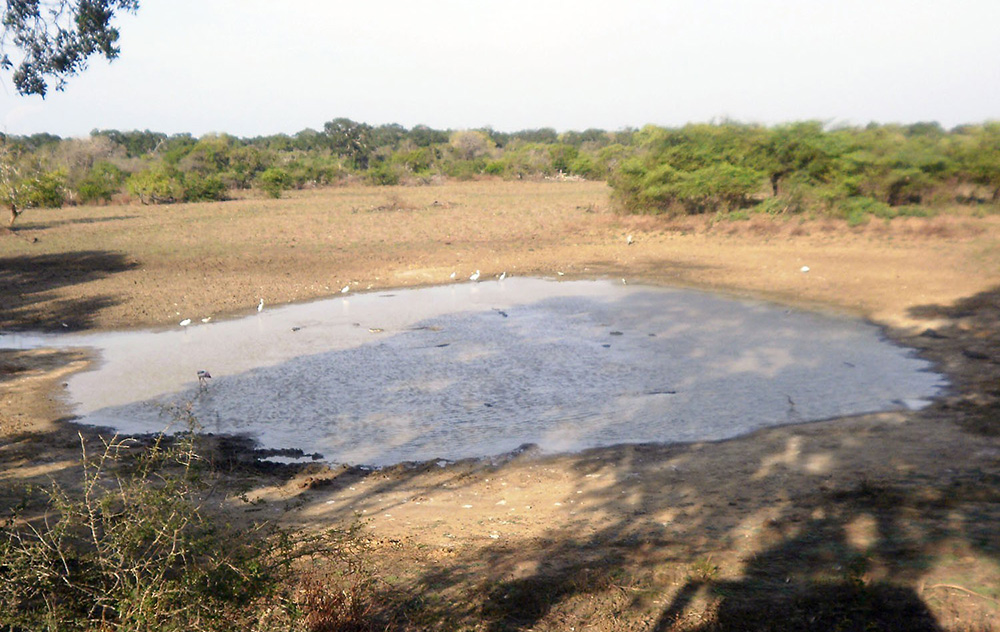
The water came quietly at first, a steady rise along the riverbanks, familiar to communities who have lived beside Sri Lanka’s great waterways for generations. But within hours, these same rivers had swollen into raging, unpredictable forces. The Kelani Ganga overflowed. The Nilwala broke its margins. The Bentara, Kalu, and Mahaweli formed churning, chocolate-brown channels cutting through thousands of homes.
When the floods finally began to recede, villagers emerged to assess the damage, only to be confronted by another challenge: crocodiles. From Panadura’s back lanes to the suburbs of Colombo, and from the lagoons around Kalutara to the paddy fields of the dry zone, reports poured in of crocodiles resting on bunds, climbing over fences, or drifting silently into garden wells.
For many, these encounters were terrifying. But to Sri Lanka’s top herpetologists, the message was clear: this is what happens when climate extremes collide with shrinking habitats.
“Crocodiles are not invading us … we are invading floodplains”
Sri Lanka’s foremost crocodile expert, Dr. Anslem de Silva, Regional Chairman for South Asia and Iran of the IUCN/SSC Crocodile Specialist Group, has been studying crocodiles for over half a century. His warning is blunt.
“When rivers turn into violent torrents, crocodiles simply seek safety,” he says. “They avoid fast-moving water the same way humans do. During floods, they climb onto land or move into calm backwaters. People must understand this behaviour is natural, not aggressive.”
In the past week alone, Saltwater crocodiles have been sighted entering the Wellawatte Canal, drifting into the Panadura estuary, and appearing unexpectedly along Bolgoda Lake.
“Saltwater crocodiles often get washed out to sea during big floods,” Dr. de Silva explains. “Once the current weakens, they re-enter through the nearest lagoon or canal system. With rapid urbanisation along these waterways, these interactions are now far more visible.”
- An adult Salt Water Crocodile (Crocodylus porosus) (Photo -Madura de Silva)
- Adult Mugger (Crocodylus plaustris) Photo -Laxhman Nadaraja
- A Warning sign board
- A Mugger holding a a large Russell ’s viper (Photo- R. M. Gunasinghe)
- Anslem de Silva
- Suranjan Karunarathna
This clash between wildlife instinct and human expansion forms the backdrop of a crisis now unfolding across the island.
A conflict centuries old—now reshaped by climate change
Sri Lanka’s relationship with crocodiles is older than most of its kingdoms. The Cūḷavaṃsa describes armies halted by “flesh-eating crocodiles.” Ancient medical texts explain crocodile bite treatments. Fishermen and farmers around the Nilwala, Walawe, Maduganga, Batticaloa Lagoon, and Kalu Ganga have long accepted kimbula as part of their environment.
But the modern conflict has intensified dramatically.
A comprehensive countrywide survey by Dr. de Silva recorded 150 human–crocodile attacks, with 50 fatal, between 2008 and 2010. Over 52 percent occurred when people were bathing, and 83 percent of victims were men engaged in routine activities—washing, fishing, or walking along shallow margins.
Researchers consistently emphasise: most attacks happen not because crocodiles are unpredictable, but because humans underestimate them.
Yet this year’s flooding has magnified risks in new ways.
“Floods change everything” — Dr. Nimal D. Rathnayake
Herpetologist Dr. Nimal Rathnayake says the recent deluge cannot be understood in isolation.
“Floodwaters temporarily expand the crocodile’s world,” he says. “Areas people consider safe—paddy boundaries, footpaths, canal edges, abandoned land—suddenly become waterways.”
Once the water retreats, displaced crocodiles may end up in surprising places.
“We’ve documented crocodiles stranded in garden wells, drainage channels, unused culverts and even construction pits. These are not animals trying to attack. They are animals trying to survive.”
According to him, the real crisis is not the crocodile—it is the loss of wetlands, the destruction of natural river buffers, and the pollution of river systems.
“When you fill a marsh, block a canal, or replace vegetation with concrete, you force wildlife into narrower corridors. During floods, these become conflict hotspots.”
Past research by the Crocodile Specialist Group shows that more than 300 crocodiles have been killed in retaliation or for meat over the past decade. Such killings spike after major floods, when fear and misunderstanding are highest.
“Not monsters—ecosystem engineers” — Suranjan Karunaratne
On social media, flood-displaced crocodiles often go viral as “rogue beasts.” But conservationist Suranjan Karunaratne, also of the IUCN/SSC Crocodile Specialist Group, says such narratives are misleading.
“Crocodiles are apex predators shaped by millions of years of evolution,” he says. “They are shy, intelligent animals. The problem is predictable human behaviour.”
In countless attack investigations, Karunaratne and colleagues found a repeated pattern: the Three Sames—the same place, the same time, the same activity.
“People use the same bathing spot every single day. Crocodiles watch, learn, and plan. They hunt with extraordinary patience. When an attack occurs, it’s rarely random. It is the culmination of observation.”
He stresses that crocodiles are indispensable to healthy wetlands. They: control destructive catfish populations, recycle nutrients, clean carcasses and diseased fish, maintain biodiversity, create drought refuges through burrows used by amphibians and reptiles.
“Removing crocodiles destroys an entire chain of ecological services. They are not expendable.”
Karunaratne notes that after the civil conflict, Mugger populations in the north rebounded—proof that crocodiles recover when given space, solitude, and habitat.
Floods expose a neglected truth: CEEs save lives—if maintained In high-risk communities, Crocodile Exclusion Enclosures (CEEs) are often the only physical barrier between people and crocodiles. Built along riverbanks or tanks, these enclosures allow families to bathe, wash, and collect water safely.
Yet Dr. de Silva recounts a tragic incident along the Nilwala River where a girl was killed inside a poorly maintained enclosure. A rusted iron panel had created a hole just large enough for a crocodile to enter.
“CEEs are a life-saving intervention,” he says. “But they must be maintained. A neglected enclosure is worse than none at all.”
Despite their proven effectiveness, many CEEs remain abandoned, broken or unused.
Climate change is reshaping crocodile behaviour—and ours
Sri Lanka’s floods are no longer “cycles” as described in folklore. They are increasingly intense, unpredictable and climate-driven. The warming atmosphere delivers heavier rainfall in short bursts. Deforested hillsides and filled wetlands cannot absorb it.
Rivers swell rapidly and empty violently.
Crocodiles respond as they have always done: by moving to calmer water, by climbing onto land, by using drainage channels, by shifting between lagoons and canals, by following the shape of the water.
But human expansion has filled, blocked, or polluted these escape routes.
What once were crocodile flood refuges—marshes, mangroves, oxbow wetlands and abandoned river channels—are now housing schemes, fisheries, roads, and dumpsites.
Garbage, sand mining and invasive species worsen the crisis
The research contained in the uploaded reports paints a grim but accurate picture. Crocodiles are increasingly seen around garbage dumps, where invasive plants and waste accumulate. Polluted water attracts fish, which in turn draw crocodiles.
Excessive sand mining in river mouths and salinity intrusion expose crocodile nesting habitats. In some areas, agricultural chemicals contaminate wetlands beyond their natural capacity to recover.
In Borupana Ela, a short study found 29 Saltwater crocodiles killed in fishing gear within just 37 days.
Such numbers suggest a structural crisis—not a series of accidents.
Unplanned translocations: a dangerous human mistake
For years, local authorities attempted to reduce conflict by capturing crocodiles and releasing them elsewhere. Experts say this was misguided.
“Most Saltwater crocodiles have homing instincts,” explains Karunaratne. “Australian studies show many return to their original site—even if released dozens of kilometres away.”
Over the past decade, at least 26 Saltwater crocodiles have been released into inland freshwater bodies—home to the Mugger crocodile. This disrupts natural distribution, increases competition, and creates new conflict zones.
Living with crocodiles: a national strategy long overdue
All three experts—Dr. de Silva, Dr. Rathnayake and Karunaratne—agree that Sri Lanka urgently needs a coordinated, national-level mitigation plan.
* Protect natural buffers
Replant mangroves, restore riverine forests, enforce river margin laws.
* Maintain CEEs
They must be inspected, repaired and used regularly.
* Public education
Villagers should learn crocodile behaviour just as they learn about monsoons and tides.
* End harmful translocations
Let crocodiles remain in their natural ranges.
* Improve waste management
Dumps attract crocodiles and invasive species.
* Incentivise community monitoring
Trained local volunteers can track sightings and alert authorities early.
* Integrate crocodile safety into disaster management
Flood briefings should include alerts on reptile movement.
“The floods will come again. Our response must change.”
As the island cleans up and rebuilds, the deeper lesson lies beneath the brown floodwaters. Crocodiles are not new to Sri Lanka—but the conditions we are creating are.
Rivers once buffered by mangroves now rush through concrete channels. Tanks once supporting Mugger populations are choked with invasive plants. Wetlands once absorbing floodwaters are now levelled for construction.
Crocodiles move because the water moves. And the water moves differently today.
Dr. Rathnayake puts it simply:”We cannot treat every flooded crocodile as a threat to be eliminated. These animals are displaced, stressed, and trying to survive.”
Dr. de Silva adds:”Saving humans and saving crocodiles are not competing goals. Both depend on understanding behaviour—ours and theirs.”
And in a closing reflection, Suranjan Karunaratne says:”Crocodiles have survived 250 million years, outliving dinosaurs. Whether they survive the next 50 years in Sri Lanka depends entirely on us.”
For now, as the waters recede and the scars of the floods remain, Sri Lanka faces a choice: coexist with the ancient guardians of its waterways, or push them into extinction through fear, misunderstanding and neglect.
By Ifham Nizam
-

 News5 days ago
News5 days agoWeather disasters: Sri Lanka flooded by policy blunders, weak enforcement and environmental crime – Climate Expert
-
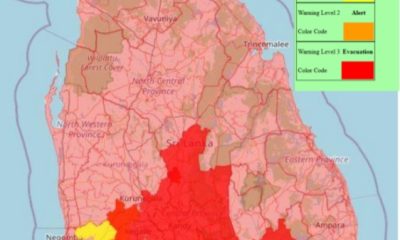
 Latest News6 days ago
Latest News6 days agoLevel I landslide RED warnings issued to the districts of Badulla, Colombo, Gampaha, Kalutara, Kandy, Kegalle, Kurnegala, Natale, Monaragala, Nuwara Eliya and Ratnapura
-
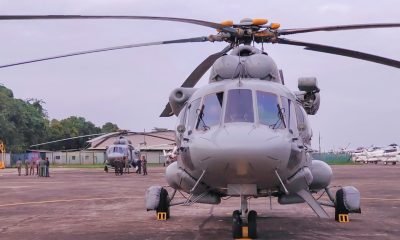
 Latest News6 days ago
Latest News6 days agoINS VIKRANT deploys helicopters for disaster relief operations
-
News2 days ago
Lunuwila tragedy not caused by those videoing Bell 212: SLAF
-

 Latest News6 days ago
Latest News6 days agoDepartment of Irrigation issues Critical flood warning to the Kelani river basin
-

 Latest News3 days ago
Latest News3 days agoLevel III landslide early warnings issued to the districts of Badulla, Kandy, Kegalle, Kurunegala, Matale and Nuwara-Eliya
-

 News6 days ago
News6 days agoCountry reels under worst weather in living memory
-

 Editorial6 days ago
Editorial6 days agoNeeded: Action not rhetoric




